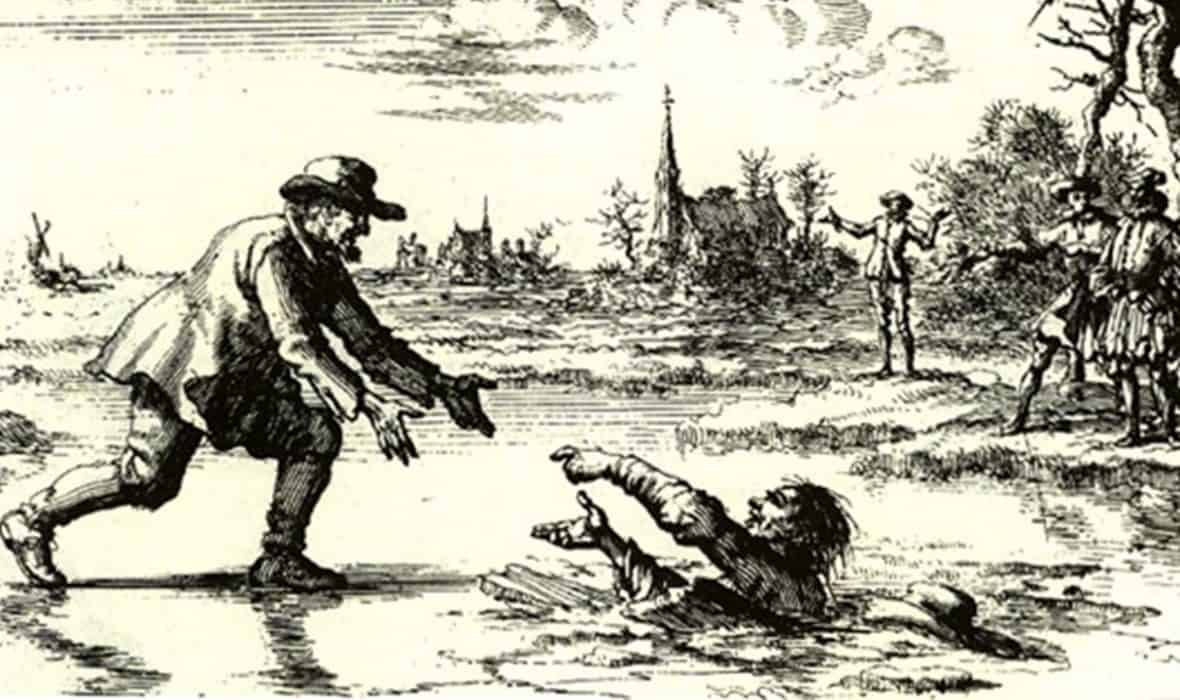The first wave of Reformers never quite escaped the idea that the church and the government ought somehow to be linked with one another.
This arrangement had been around ever since the fourth century A.D., and it wasn’t easy—even for Scripture-saturated, gospel-loving preachers like Luther and Calvin—to see any other way to sustain society. In Calvin’s Geneva in 1553, a theologian named Michael Servetus was burned at the stake for his denial of the Trinity. Now, in all fairness, Servetus would have been executed anywhere else in Europe as well! Rejection of the Trinity was a capital crime, and the Roman Catholic Church had already put a price on Servetus’ head. Perhaps more significant, Calvin himself spent many hours with Servetus during and after the trial, urging Servetus to avoid execution by embracing the truth that one God exists in three persons. At the same time, Calvin remained the captive of an age that assumed the state’s right to enforce theological orthodoxy.
:: “Baptize Me With True Christian Baptism” ::
A couple of years after Luther nailed his theses to the door in Wittenberg, a priest named Huldrych Zwingli began preaching a message of reform in Zurich, independent of any direct influence from Luther. It was in Zwingli’s Zurich that a movement arose with the radical idea that no government should enforce theological orthodoxy.
But it didn’t start with a political discussion.
It started with a Bible study.
A young Swiss scholar named Felix Manz had been well-trained in Greek, Latin, and Hebrew. While Martin Luther was translating the Bible into German, Felix Manz was gathering a small group of students in Zurich for a weekly study of Scripture in the original languages. As they studied, Felix and his “Swiss Brothers” came to a radical and unexpected conclusion: The New Testament never explicitly commanded infant baptism.
In January, 1525, one Swiss Brother—convinced that his baptism as an infant had not been valid—said to one of his friends, “Baptize me with true Christian baptism, upon my faith.” Water was poured over his head in the name of the threefold God. One by one, all the Swiss Brothers, including Felix, received believers’ baptism. Their revolutionary act would rob their of their livelihoods and earn them the epithet “Again-Baptizers,” or “Anabaptists.” That very night, the Zurich city council banished the Swiss Brothers.
:: The First Protestant Martyr ::
Most of the Swiss Brothers fled to nearby villages—but, even there, they found no welcome. Felix Manz was seized and sentenced to life in prison. After five months in a dungeon, he escaped. He was recaptured in October, 1526. The Zurich city council sentenced Manz to death. Their charge against him? “He wanted to gather those who wanted to accept Christ … and unite with them through baptism.”
In a mockery of his beliefs, it was by water that Felix Manz died. The executioner tied Manz’s arms behind his back and shoved him into an icy river. Manz died singing, “In manus tuas, Domine, commendo spiritum meum.” “Into your hands, Lord, I commit my spirit.”
Felix Manz was the first non-Catholic Christian to be martyred by fellow Protestants. He was far from the last. Widespread persecution of Anabaptist pastors led to a loss of biblical scholars in the movement; this loss opened the door for leaders whose agendas were shaped by personal charisma and apocalyptic claims instead of Scripture. In 1535, one rogue band of Anabaptists took over the city of Munster in the German province of Westphalia. The end result was a brutal massacre.
To learn more about the Munster massacre, watch this video, beginning around 2 minutes 45 seconds:
:: From Munster to the Mennonites ::
After the Munster massacre, both Protestant and Roman Catholic princes worked to destroy the Anabaptist movement. Even Luther and Calvin urged rulers to destroy the Anabaptists. “It is far better that two or three burn now,” Calvin wrote, “than to have thousands perish in Hell.”
It wasn’t until a former Roman Catholic priest named Menno Simons emerged as an Anabaptist leader that the Anabaptists returned to their roots. Menno began to emphasize anew the earlier Anabaptist commitment to the sufficiency of the Scriptures for faith and practice, the rejection of every form of violence, the baptism of believers only, and the freedom of Christians to practice their faith without interference from the government. So profound was the influence of Menno Simons that, after his death, many Anabaptists became known as “Mennonites.”
30 Days through Church History: Day 20


